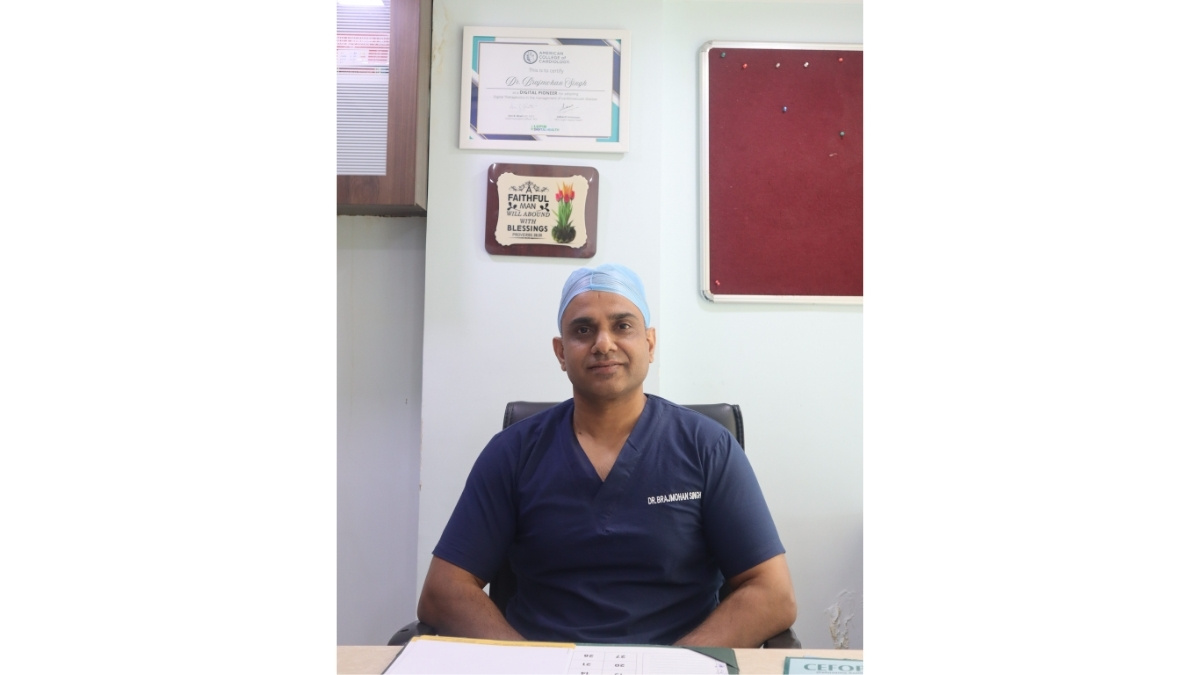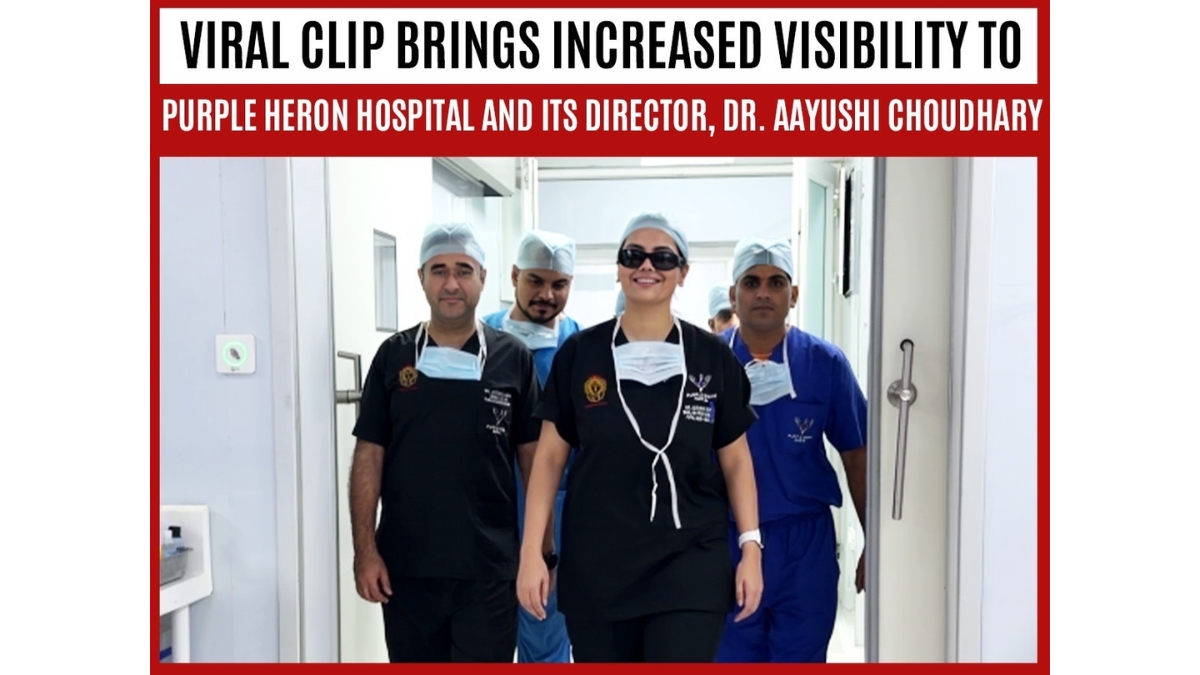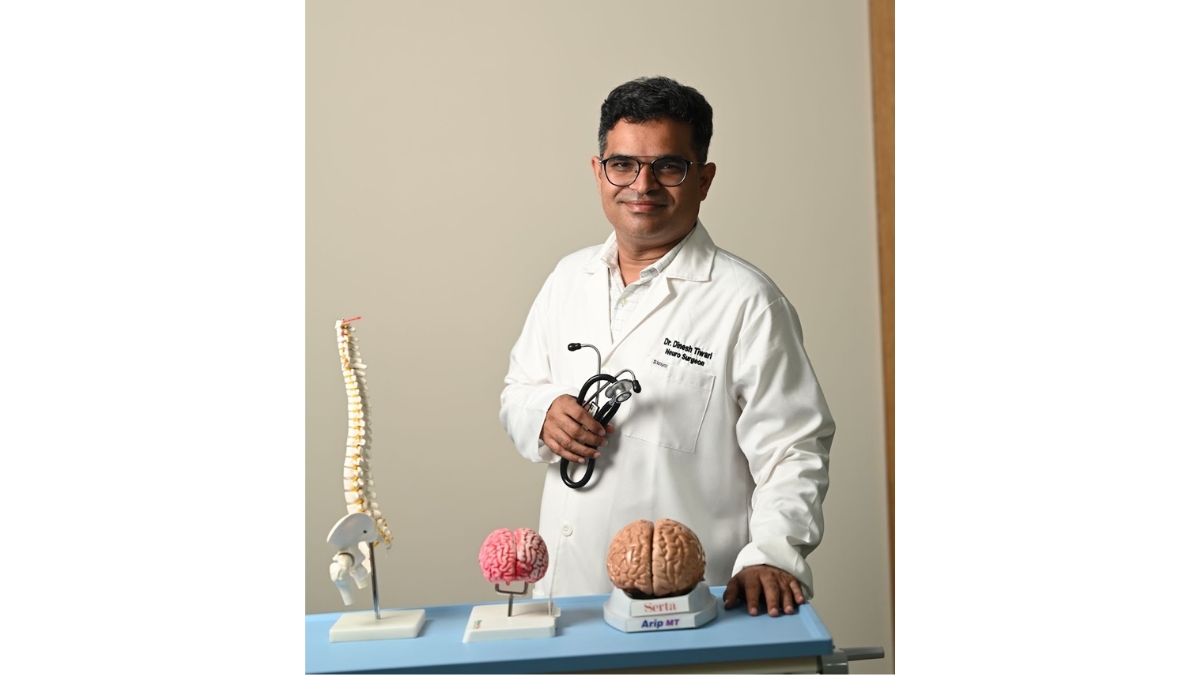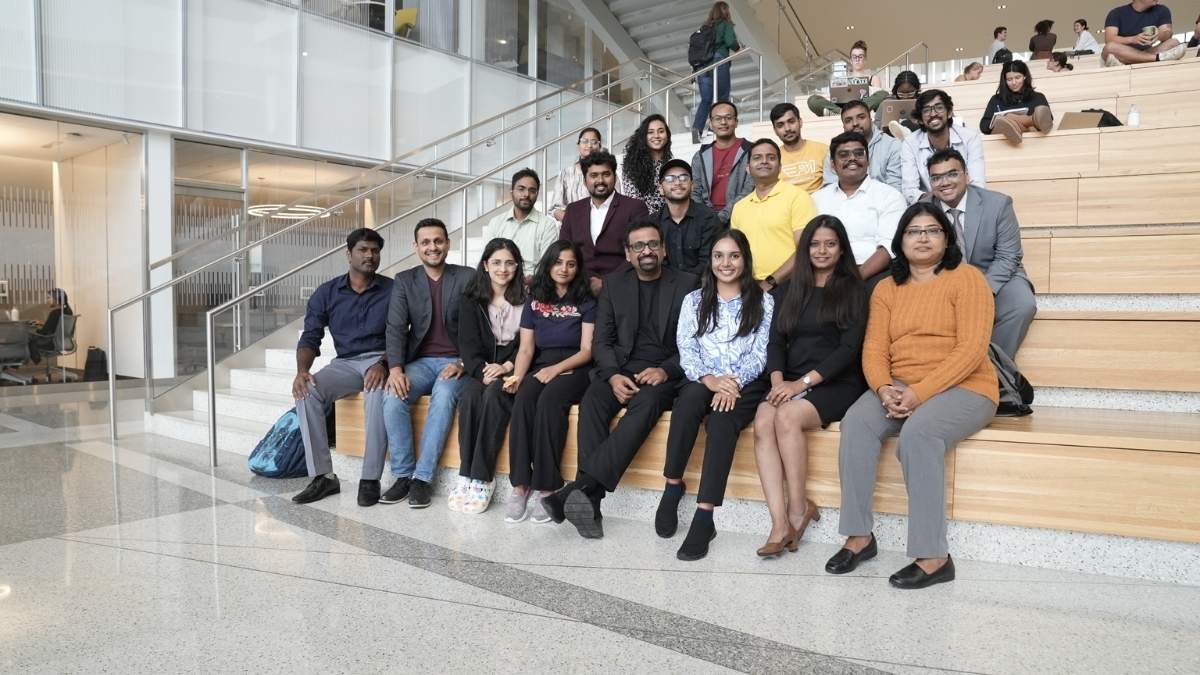New Delhi (India), July 1: On this Doctor’s Day, leading health experts share invaluable insights into understanding osteoporosis. This bone disease, affecting millions worldwide, weakens bones and increases fracture risk. Experts discuss prevention strategies, diagnostic advancements, and treatment innovations to empower readers in managing and mitigating osteoporosis effectively.
Dr. Samir Pilankar – MS Orth, DNB, MNAMS, Fellowship training, (Germany, Switzerland & Spain), Senior Joint replacement & Arthroscopy surgeon, Robotic Knee Surgeon at Sujay & Nanavati Max Hospital, Mumbai
Dr. Samir Pilankar, Senior Joint Replacement & Arthroscopy Surgeon, renowned for his expertise in robotic knee surgery at Sujay & Nanavati Max Hospital, Mumbai, addresses the impact of osteoporosis and osteoarthritis on bone and joint health. With India projected to have the highest number of osteoarthritis cases globally by 2025, Dr. Samir emphasizes the importance of preventive measures and awareness. Drawing from over 25 years of experience, Dr. Samir advocates for maintaining bone health through a balanced diet rich in calcium and vitamin D, supplemented if necessary. He promotes regular physical activity like walking and resistance training to enhance bone strength, cautioning against high-impact exercises on hard surfaces to prevent arthritis progression. Stressing the avoidance of smoking and alcohol to preserve bone density, he advises regular orthopedic check-ups and DEXA bone density tests when indicated. For those with advanced osteoarthritis, Dr. Samir highlights the transformative benefits of robotic knee replacement surgery, enhancing mobility and overall quality of life. His proactive approach underscores the importance of education and early intervention in managing these common bone and joint conditions effectively.
Dr. Satish Mutha, MS, DNB Orthopaedics, Orthopaedic & Sports Medicine Consultant, P D HINDUJA, Khar & Siddhi Clinic, Mumbai
Osteoporosis is rapidly emerging as one of the most common deterrents to a quality life in the elderly population. With the average lifespan reaching 80 now, more and more people are suffering from osteoporosis-related fragility fractures like compression fractures in the spine and hip fractures. These fractures significantly affect the quality of life of senior citizens and also are a major financial burden on the family. To a large extent, these can be prevented by taking care of bone health & timely detection & treatment of osteoporosis. Periodic DXA scans can help the physician monitor the bone density of the individual & institute timely remedial measures to prevent secondary complications of osteoporosis.
Dr. Rohil Singh Kakkar, MBBS, D.Ortho, MS Ortho, Fellowship in Trauma & Joint Replacement Surgery, Faculty Member – Royal College of Surgeons of England, Consultant Joint Replacement and Orthopaedic Surgeon, Marble City Hospital, Rajasthan
Dr. Rohil Singh Kakkar, a Consultant Orthopaedic Surgeon with a subspecialty in Joint Replacement Surgeries, shares valuable insights into osteoporosis. Osteoporosis is a metabolic bone disease that causes substantial decreases in bone matrix or mineral quality. Osteoporosis prevention focuses on a variety of dietary and lifestyle adjustments. He suggests a nutritional regimen that includes 1,200 mg of calcium and 800-1,000 IU of vitamin D per day for the elderly population. Activities such as walking, jogging, or exercising with weights help improve bone density and balance, thereby decreasing the chances of fractures and falling. All postmenopausal women and elderly men should be given bone density tests regularly and those who have risk factors like having a low body weight, having a family history of osteoporosis or having fractures, should especially take the key measures of dietary modifications, exercise and early diagnosis and treatment to keep osteoporosis in control. Fall prevention strategies and regular monitoring are essential to mitigate fracture risks and enhance overall bone health. His comprehensive approach aims to empower patients in managing osteoporosis effectively, thereby reducing its impact on quality of life and mortality rates associated with osteoporotic fractures.
Dr. Vidyasagar Chandankere, MS Ortho, Fellowship in PEDIATRIC Orthopedics, Pediatric Orthopedic surgeon, Hyderabad
Osteoporosis is a metabolic bone disease wherein the quantity or quality of bone matrix or bone mineral is reduced substantially. It is common in females who are more than 60 years old. Some of the common symptoms include back pain, stooping posture or even fracture with trivial injury. Bone health is maintained by good mineralization of the bone matrix which is continuously broken down and reformed. When the bone breakdown outpaces formation, osteoporosis results. It is also known as “Silent Bone disease”, as one may be asymptomatic until they break a bone. Old age, Hormonal imbalance, Use of steroids or anti-epilepsy medications, smoking and alcohol consumption have been associated with Osteoporosis. A good diet with sunlight exposure and decent daily physical exercises can help reduce the risk. Post-menopausal females after 65 years of age may need screening. Bone DXA scans are done to assess bone mineral density. Vitamin D, Calcium supplements, Bisphosphonates and hormone replacement therapy are used for treating osteoporosis.
Dr. Madan Mohan Reddy, Sr. Consultant Orthopedic Surgeon Robotic Knee Replacement Surgeon at Apollo Hospitals, Chennai
Dr. Madan Mohan Reddy provides valuable insights into robotic-assisted knee replacement surgeries, highlighting their benefits and misconceptions. Robotic-assisted knee replacement (rTKR) surgeries offer enhanced accuracy compared to traditional methods, with a success rate approaching 100%. Contrary to common belief, the procedure is performed by the surgeon with the assistance of a robotic arm, ensuring precise implant positioning derived from pre-operative CT scans. This technology minimizes soft tissue damage, facilitating quicker recovery times and potentially allowing for same-day hospital discharge. Dr. Reddy stresses that while robotic assistance improves surgical outcomes and customization for each patient’s anatomy, experience remains paramount. Surgeons with extensive experience in robotic procedures can optimize results, ensuring patients achieve a more natural knee feel post-surgery. For younger patients previously limited by traditional knee replacement longevity, rTKR offers a promising alternative, allowing for active lifestyles with improved comfort and function. Dr. Reddy underscores the evolving role of robotics in orthopedic surgery, transforming outcomes and expanding treatment options for patients seeking long-term relief from arthritis-related knee pain.
Dr. Anuj Chawla, MBBS, MS (Ortho), DNB(Ortho), MRCS (Glasgow), Dip SICOT, FRCS Tr & Orth (Glasgow), SICOT Fellowship Madrid, Spain, Foot and Ankle fellowship, UK, Consultant Orthopedic and Foot & Ankle Surgeon
As Doctors’ Day approaches, Dr. Anuj Chawla, a Consultant Orthopedic and Foot & Ankle Surgeon at Saqsham Ortho, sheds light on the critical issue of osteoporosis, a condition affecting millions globally. Emphasizing the silent yet devastating nature of osteoporosis, Dr. Chawla underscores the urgent need for awareness and proactive measures to combat this prevalent disease. India has notably become the Osteoporotic Capital of the World, impacting nearly one-third of women post-menopause. Early detection through routine bone density tests is essential for timely intervention and effective management strategies. Dr. Chawla advocates for preventive actions such as maintaining a balanced diet rich in calcium and vitamin D, engaging in weight-bearing exercises, and avoiding habits like smoking and excessive alcohol consumption, which can exacerbate bone loss. By empowering individuals through education and advocating for preventive healthcare, Dr. Chawla envisions a future where osteoporosis-related complications, particularly fractures, are minimized. His commitment to raising awareness and promoting healthy lifestyle choices aims to build a resilient population better equipped to combat the challenges posed by osteoporosis.
Dr. Jitesh Jain, MS, FNB( sports med), FISM, Dip. Sports med ( UK) Consultant Joint Replacement and Ligament Injury Specialist in RHL Rajasthan Hospital, Jaipur
Osteoporosis (OP) is a disease that weakens bones and has a high morbidity rate worldwide. Many factors, including aging, estrogen deficiency (in postmenopausal women), prolonged immobilisation (post fracture) and a sedentary lifestyle make its prevalence high, particularly among the elderly. Moderate exercise as an effective non-drug treatment helps increase bone formation and help prevent osteoporosis. Brisk walking, dancing, low-impact aerobics, elliptical training machines, stair climbing and gardening all are good weight-bearing aerobic exercises to prevent osteoporosis. Calcium (dairy, green leafy vegetables, soy, tofu, plant-based drinks, nuts, and fish), Magnesium and potassium (fruits and vegetables), Vitamins C, K, and A (fruits and vegetables), Fiber (whole grains) should be included in your daily diet plan to keep bones healthy.
Dr. Naveen Kumar LV, MBBS, MS Orth, FRCS Orth (Eng), MCh Hip & Knee (UK), MSc Orth (UK), Dip SICOT (Italy), FEBOT (Portugal), MRCGP (UK), Dip FIFA SM (Switzerland), (FSEM (UK), Bangalore
Dr. Naveen Kumar LV provides comprehensive insights into osteoporosis, emphasizing its causes, risk factors, symptoms, diagnosis, and management strategies. Osteoporosis, characterized by weakened and brittle bones prone to fractures, primarily affects women after menopause and older adults due to accelerated bone loss. Factors such as family history, certain medical conditions (like rheumatoid arthritis), long-term steroid use, physical inactivity, and poor nutrition exacerbate the risk. Signs and symptoms of osteoporosis often manifest only after a fracture occurs, commonly in the spine, hip, or wrist, and may include back pain, loss of height, or a stooped posture. Diagnosis relies on bone density scans (DXA), as X-rays are insufficient indicators. Dr. Naveen Kumar advocates a multifaceted approach to treatment and prevention, including calcium and vitamin D supplements, weight-bearing exercises, and medications like bisphosphonates or denosumab to slow bone loss. Lifestyle adjustments such as quitting smoking and moderating alcohol intake are also crucial. Early detection and intervention are pivotal in managing osteoporosis effectively and reducing the incidence of debilitating fractures, ensuring a better quality of life for patients.
Dr. J Sachdeva, MS Orthopedic, MCh Orthopedic, Faridabad
Dr. J Sachdeva, a senior orthopedic surgeon with 23 years of experience and founder of an orthopedic specialty hospital in Faridabad, provides crucial insights into osteoporosis. This condition, characterized by reduced bone mass and increased fracture risk, particularly affects postmenopausal women and is a significant public health concern in India, impacting millions. Preventive measures such as ensuring adequate calcium and vitamin D intake through diet or supplements, regular weight-bearing exercises, and lifestyle modifications like avoiding smoking and excessive alcohol are emphasized. Dr. Sachdeva underscores the importance of early screening with bone density tests (DEXA scans) and raising awareness about osteoporosis risks. Treatment options include medications like bisphosphonates, SERMs, and Denosumab to prevent bone loss, along with physical therapy to improve strength and balance. Fall prevention strategies and regular monitoring are essential to mitigate fracture risks and enhance overall bone health. His comprehensive approach aims to empower patients in managing osteoporosis effectively, thereby reducing its impact on quality of life and mortality rates associated with osteoporotic fractures.
Dr. Nelson Pinto, Mangalore, Consultant orthopaedic Arthroscopic surgeon and sports injury specialist, Team Doctor and Head of medical services at Lucknow Supergiants (LSG) /Durban Supergiants(DSG)/ Mohun Bagan Supergiants (MBSG), Previously Head of medical services at FC Goa
Osteoporosis is a progressive disease that weakens bone and increases the risk of fractures. It is a silent disease until complicated by fractures. 50 % of women and 20% of men above 50 develop osteoporosis-related fractures. Women, Aged>50, unhealthy lifestyles, chronic disease and premature menopause are major risk factors. Diagnosis and investigations, DEXA scan of the hip, femoral neck, Lumbar spine and combination of above sites. In obese or bedridden patients 1/3rd radius also may be used. The important thing to note is that the T score is applied in post-menopausal women and men above 50 years. T score >_2.5 SD is called osteoporosis Z score oops applied in premenopausal women and men less than 50 years old. Z score <_ 2 is called osteoporosis. Prevention, detection and treatment are very essential to prevent fractures from osteoporosis. Prevention by a diet rich in calcium, Vitamin D and protein, exercise regularly and lifestyle modifications Get frequently assessed by an orthopaedic surgeon or physician when to do Dexa scan and treat or prevent osteoporosis. Treatment: -Calcium and vitamin D supplements as suggested by doctors Group of drugs called bisphosphonates /SERMS Teriparatide or denosumab individually or combination therapy as prescribed by specialists.
If you have any objection to this press release content, kindly contact [email protected] to notify us. We will respond and rectify the situation in the next 24 hours.








